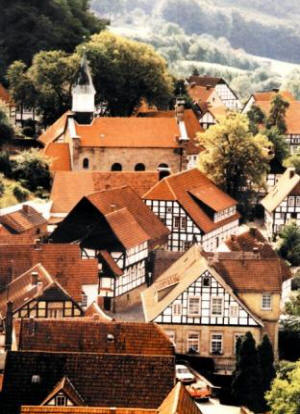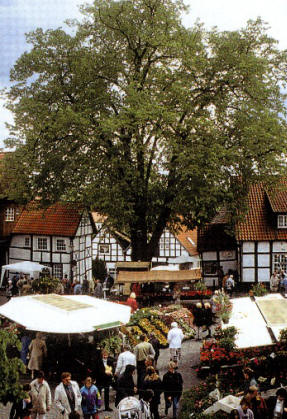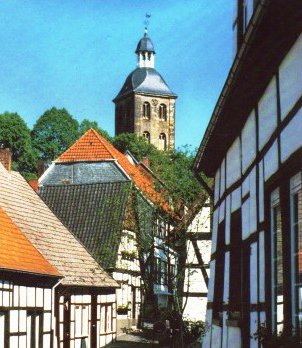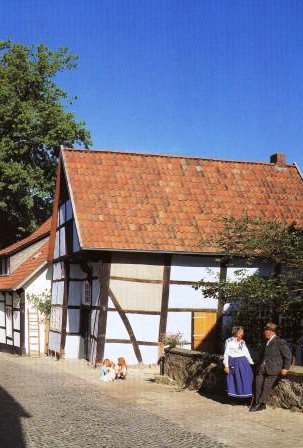


TECKLENBURG
Market day in the square
The church in the middle of town among half-timbered houses


E37, A1, 7 km s. (north: exit 73 “Tecklenburg”; west: exit 11 from E30, A30) /10/
The beautiful woodland Teutoburger Wald, which rises some hundred metres above the surrounding fields, forms a splendid framework for the little town of Tecklenburg.
Here the winding streets invite you to a pleasant walk up- and downhill. Everywhere beautiful, halftimbered houses look down on the visitor, showing off their finest façades around the cosy square. And it was indeed here, above the square, that it all began. Some time during the 12th century a castle was erected on this strategic site, high above the tree tops and with an excellent view over the plains. This led to the influx of artisans and tradesmen, settling at the foot of the castle, and a little market square was soon created. Unfortunately, nowadays the castle is in ruins and hidden from view, unless you seek it out to see a performance of the open-air theatre established there, or join a guided tour of the town.
A FAVOURED JUNCTION
During the early Middle Ages the town flourished due to its favourable situation on the trade route Lübeck- Bremen- Münster- Cologne. It controlled an important mountain pass and was able to cash in toll money and run a market trade with wares from near and afar. As there were no other roads, even the pilgrims from Northern Europe all had to take this route for their journeys to Rome and Santiago de Compostela, and so Tecklenburg became a place where people plied their trade and travellers found food and lodgings for the night.
Up in the castle the counts of Tecklenburg ruled and warred against neighbouring principalities in the constant power struggle for supremacy of the area. A town wall was built and the castle had to be fortified as the art of warfare improved. At the end of the 16th century many houses in the town found themselves in the crossfire of the battles and it was deemed wise to dismantle these houses in order to free up a large area as a shooting range. This decision meant that now nearly all the houses in the old town centre date back to the 16th and 17th centuries. It is, in other words, a very homogenous collection of houses spreading out along these streets.
GROWTH ALTERNATING WITH CROP FAILURE
During the 15th and 16th centuries new roads were built in Europe, and Tecklenburg lost its strategic importance as thoroughfare. However, in the 16th century the town had a second boom, owing to a new venture: linen manufacture. Today you can visit The Local History Museum in the very building where, in the olden days, the linen was put through a rigorous examination.
In the 19th century the town suffered a decline. The linen manufacture ceased, and long periods of drought led to famine. People emigrated to America or went to Holland as immigrant labourers. Today we see a different picture: Tecklenburg has developed into a pleasant and popular holiday destination. Just like it did in the Middle Ages, the town will now offer lodgings for the night, and several cosy inns are waiting to show off their culinary skills.